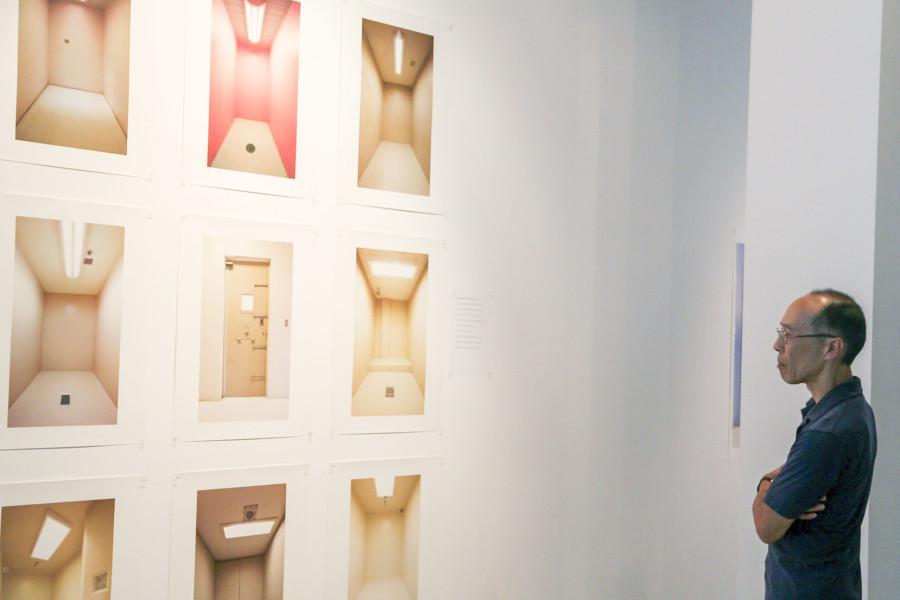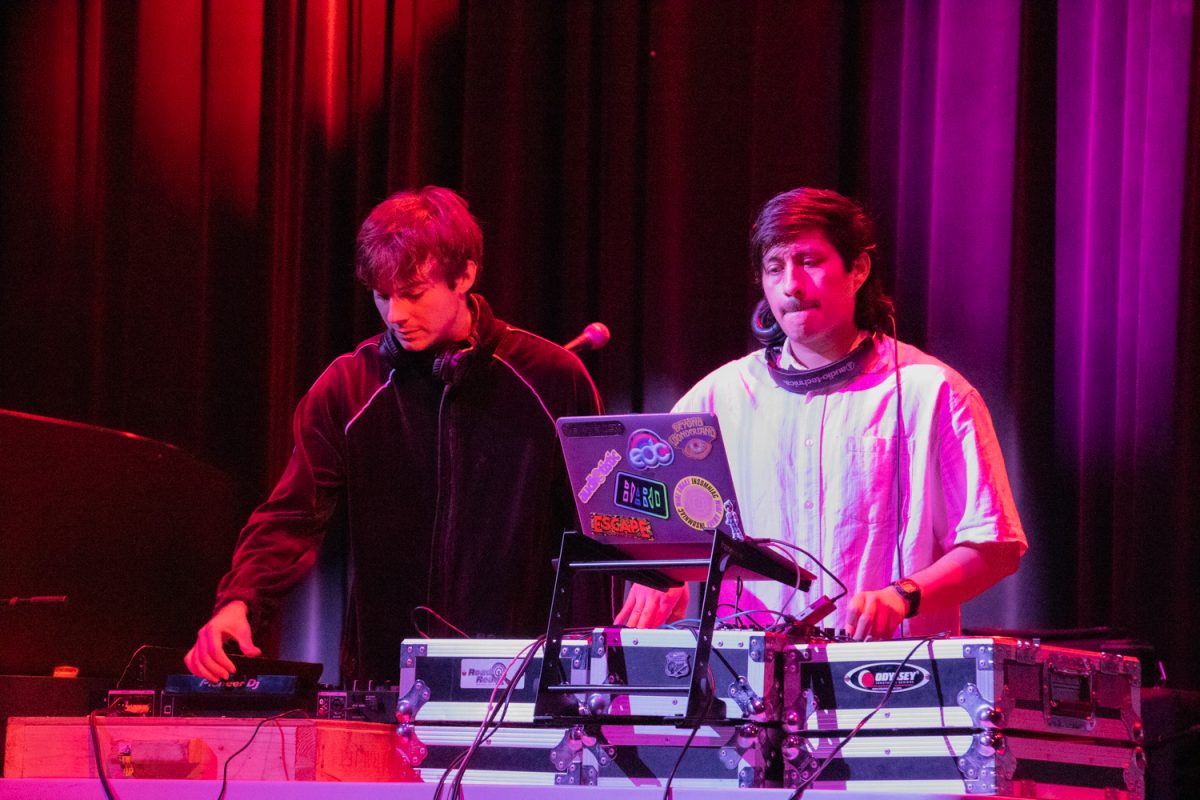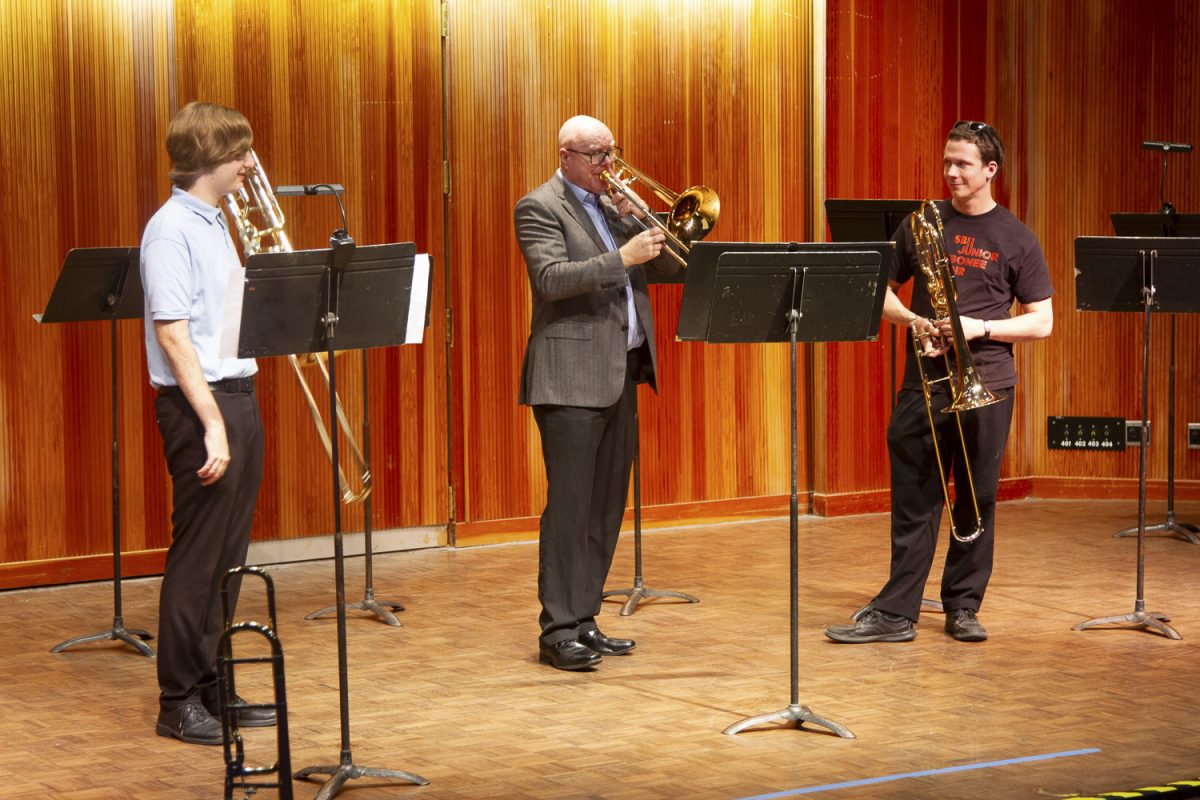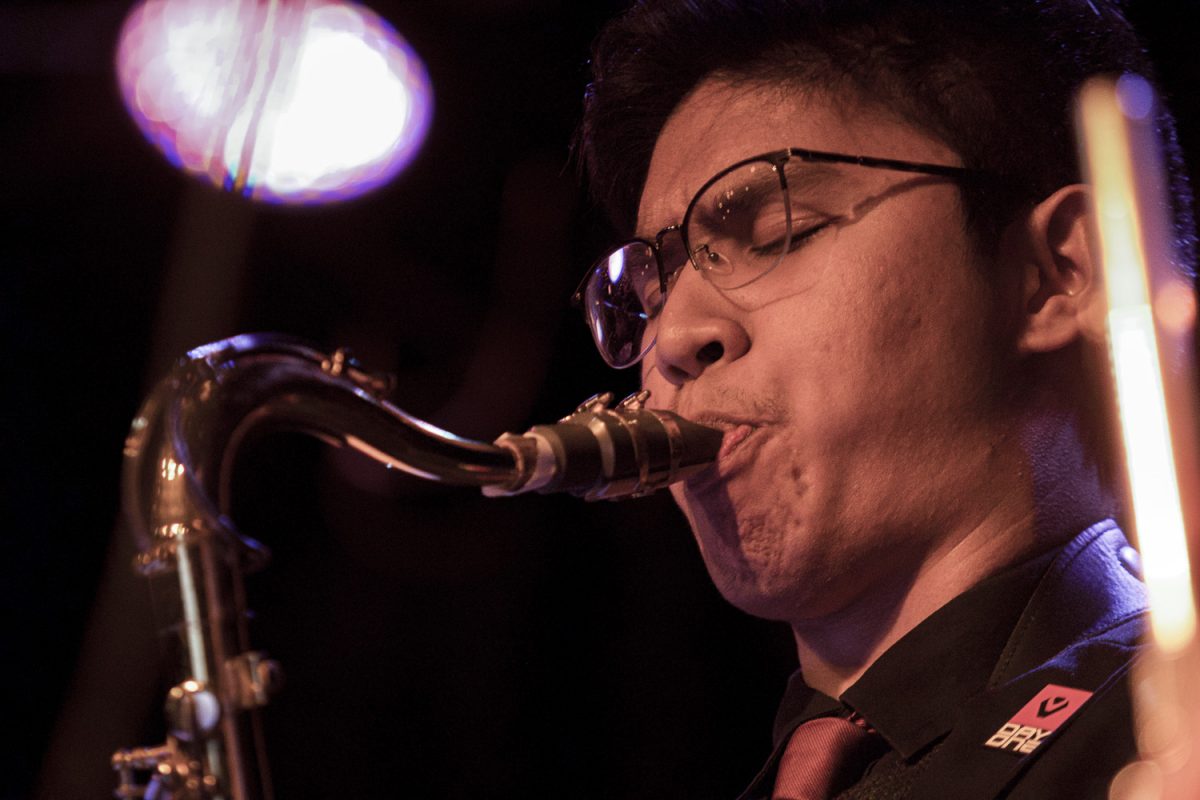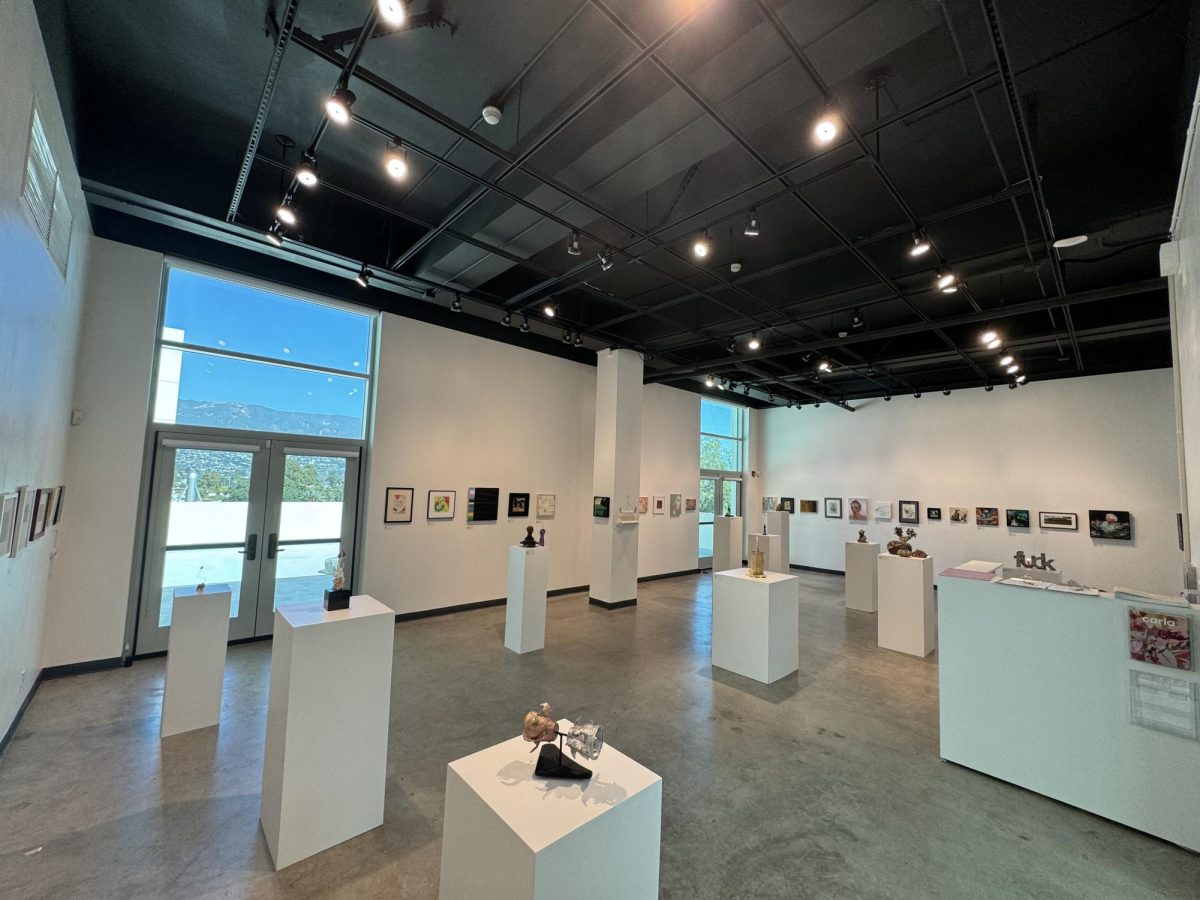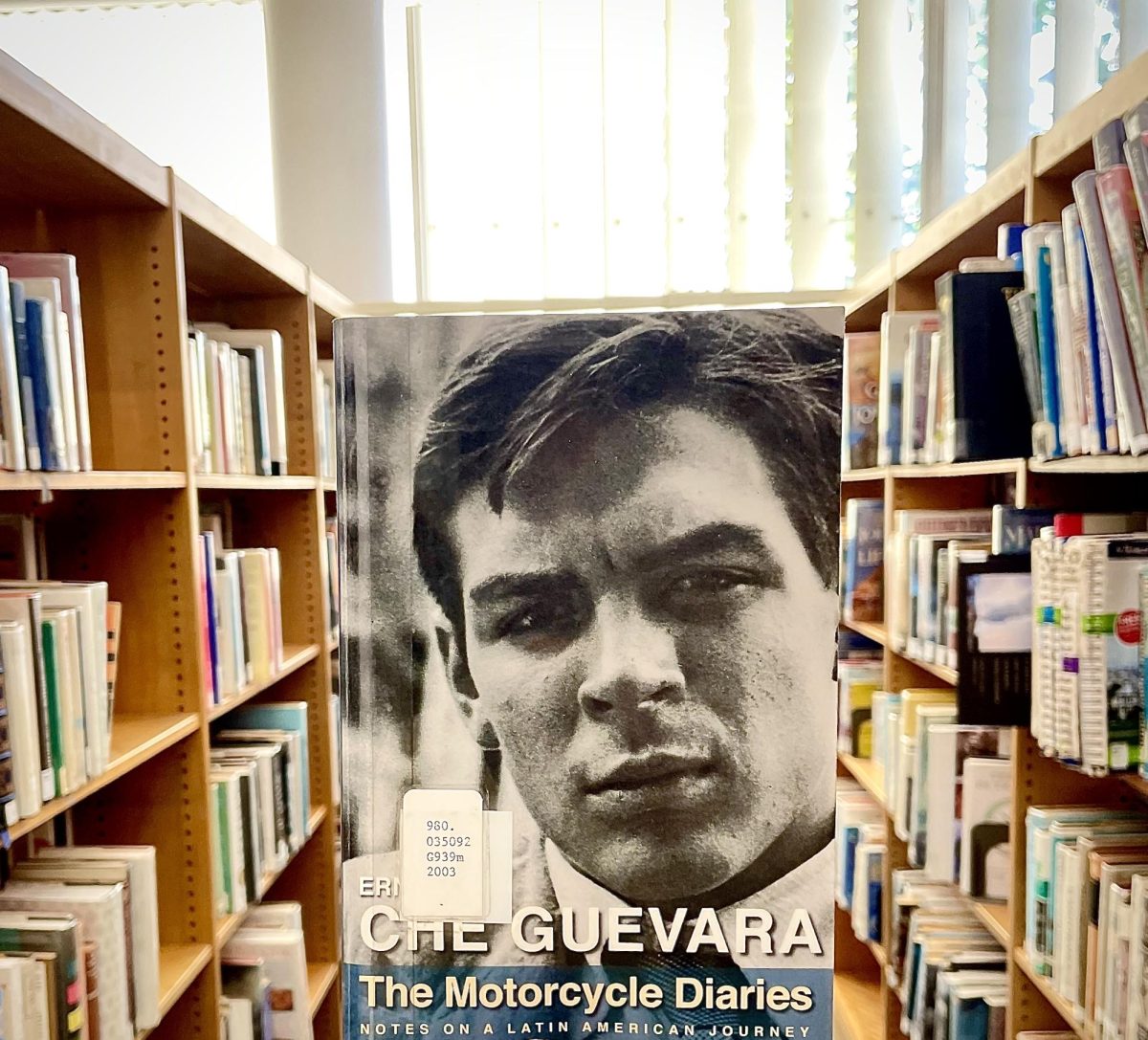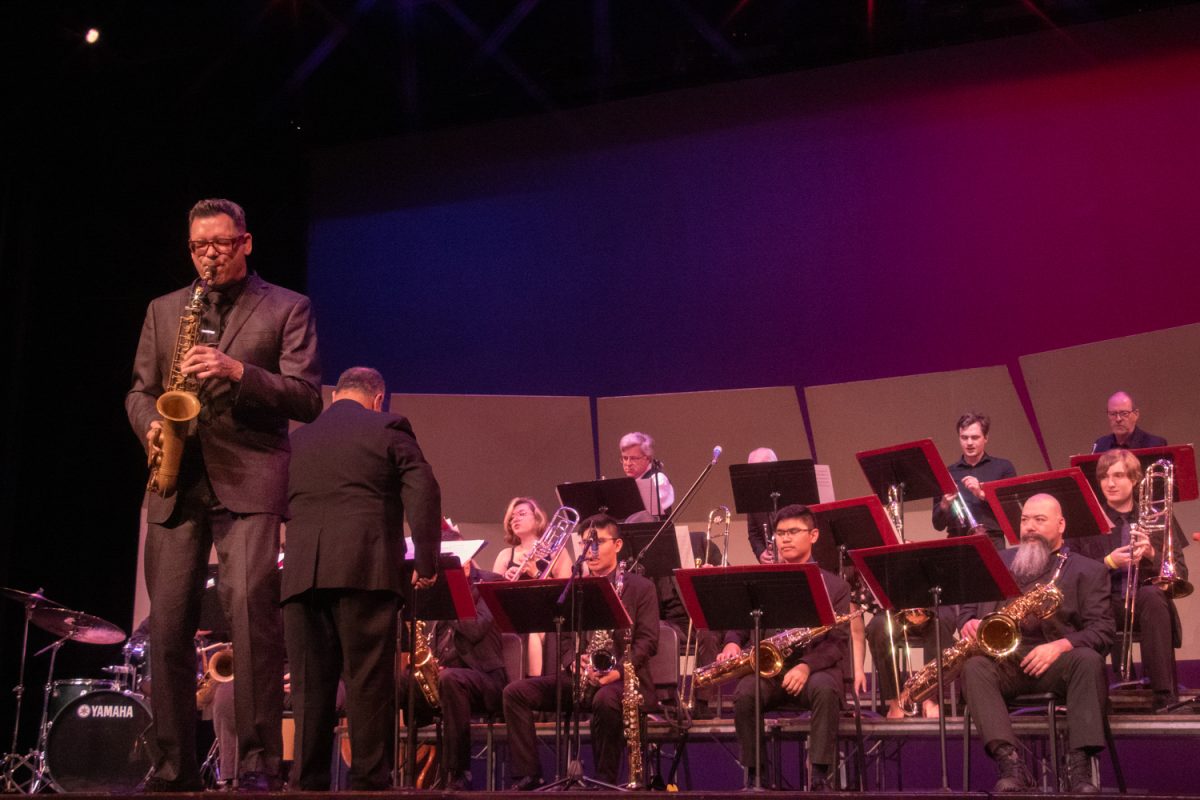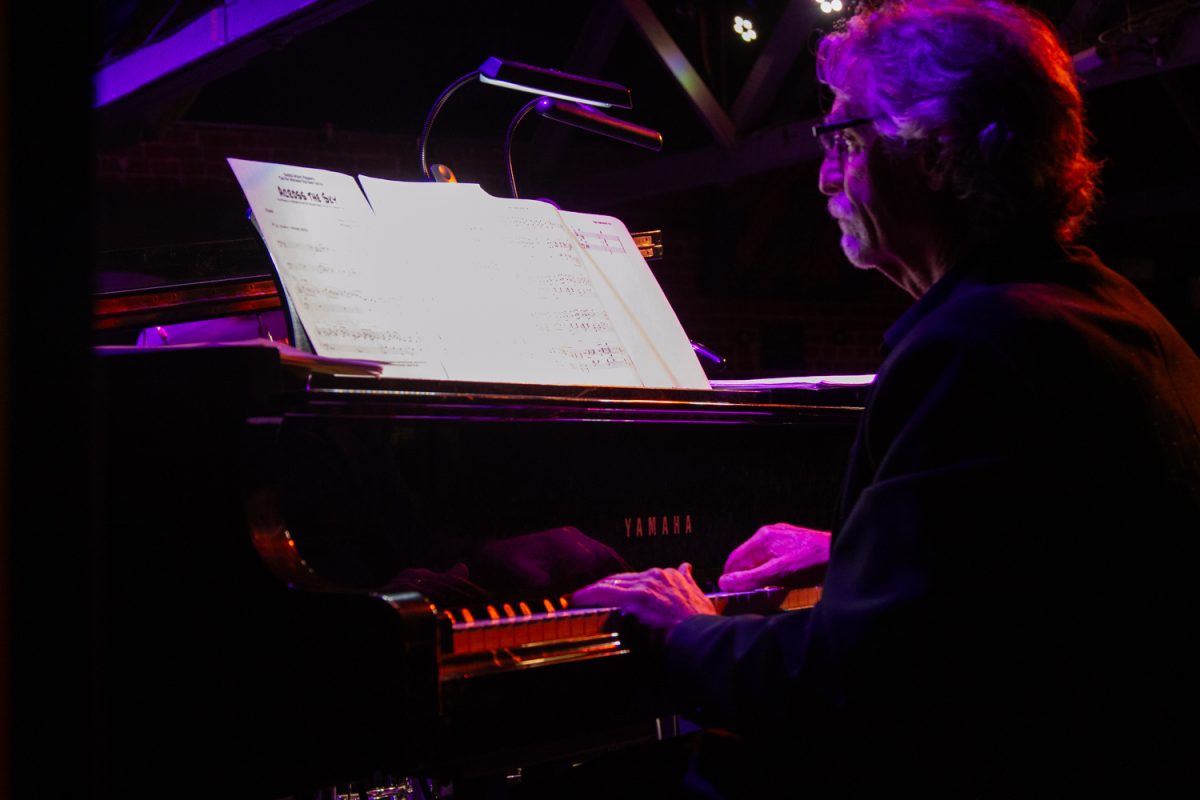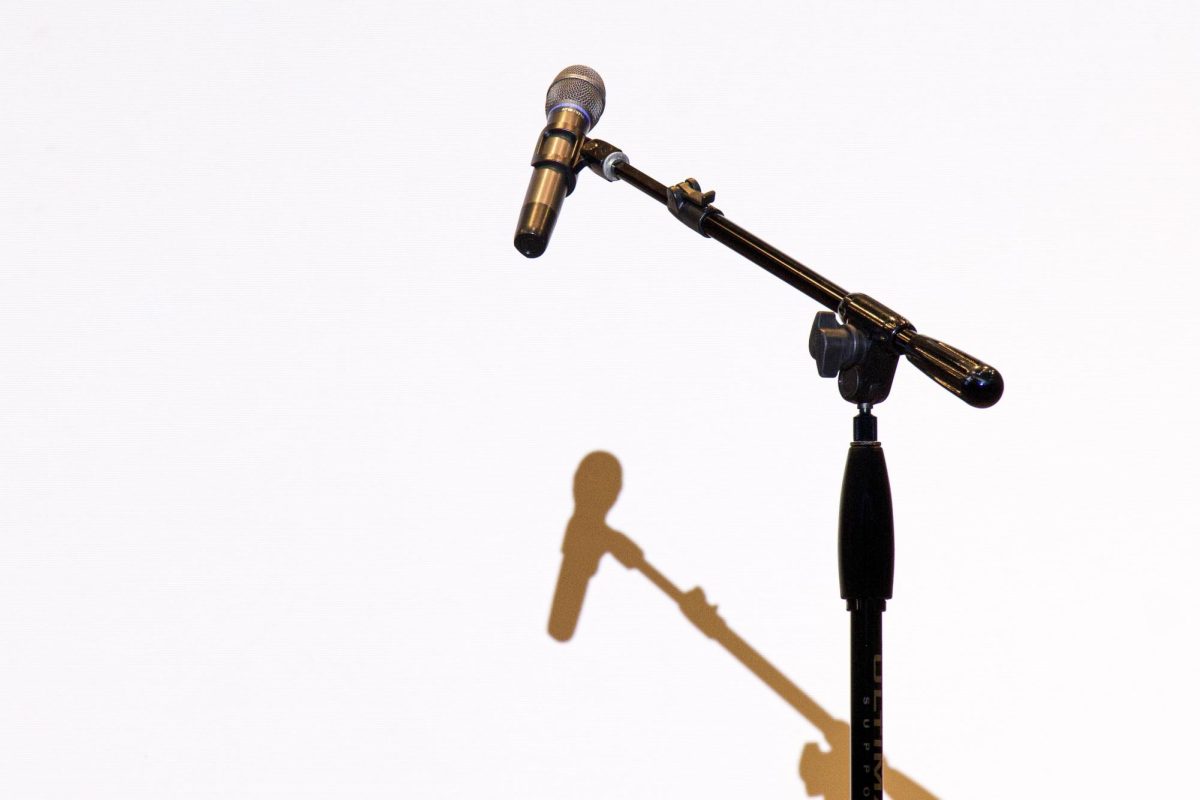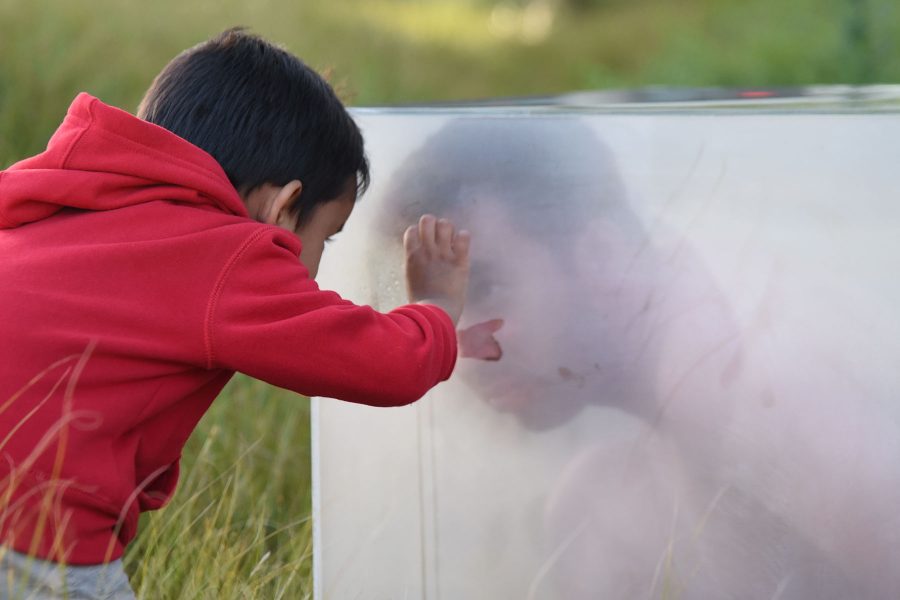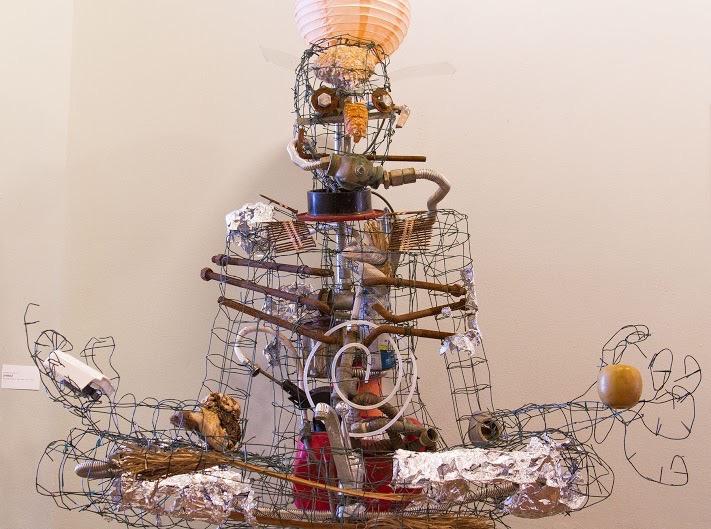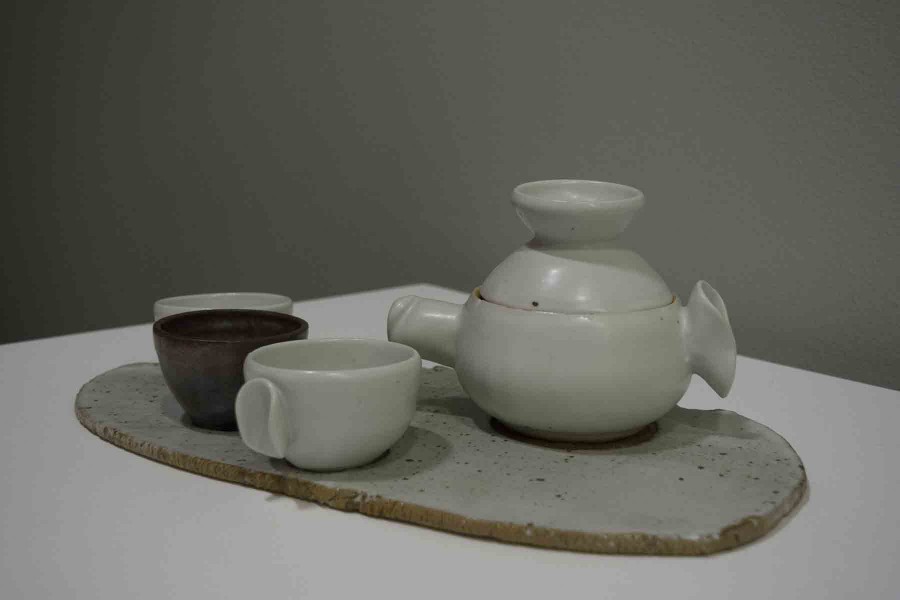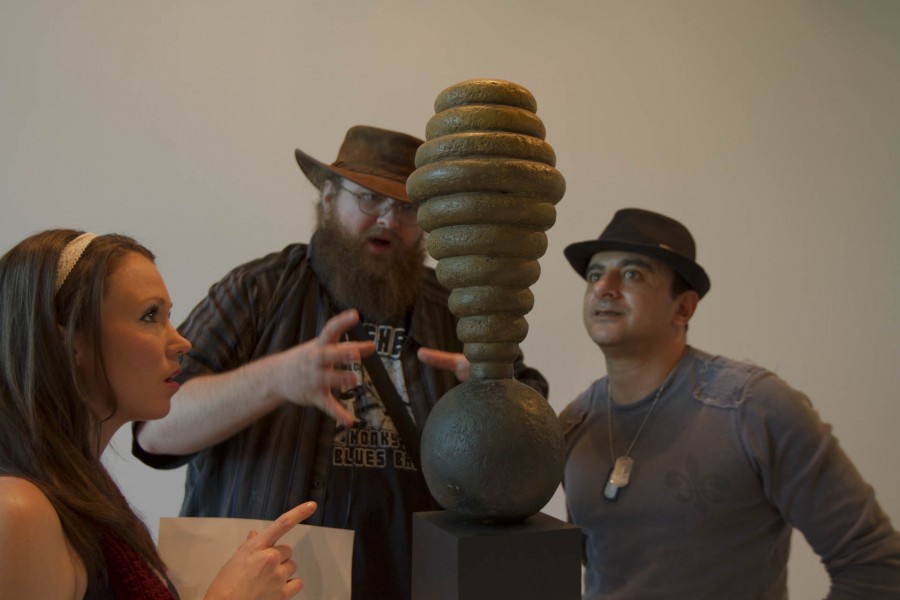The Atkinson Gallery held the opening night art exhibit featuring Richard Ross’s photo gallery of juvenile detention facilities Friday, Sept. 25.
The crowd ranged between older citizens and younger City College students who were interested in the controversial exhibit.
Gallery director Sarah Cunningham arranged the exhibit in a way that promoted the intensity Ross’ photos can have on an individual.
The photo gallery displayed a variety of juveniles within the confined walls of the detention facilities and even though their faces were blurred, the emotions of sadness and desolation were evident in their body language.
One of the more emotional pieces was a photo of blood on one of the walls within the solitary confinement spaces. The raw photographs and the exposure of the inmates and their crimes was truly powerful. Ross’s photos were extremely dark and constantly emphasized being isolated. It was clear that solitary confinement does not provide a sufficient way of reforming an inmate for their unlawful behavior.
Gage Beckley, City College student, described his initial experience as feeling “sad, but I don’t feel directly affected, it is a part of our reality.”
While Alexandra Adams, an Arts major at City College, said, “When walking in, I can definitely feel what the models in the photos are feeling.”
The use of solitary confinement is a controversial topic that Ross has exposed to the public through his photographs. This topic debates whether or not solitary confinement is humane or even beneficial within juvenile detentions.
“I don’t think that it’s right and I don’t think that a person should be held in a box and treated like less than a human being because they made a mistake,” said Adams.
Ross attended the exhibit’s opening and explained his inspiration for his art work. “I started working with these kids serendipitously and once you realize you’re the only person that is listening to them when no one else is, you have to represent people without a voice and families without power and from communities without resources; you realize that you have to do it.”
He then explained the process that he had to undergo to have access within the juvenile detentions. “You have to ask, you have to be pretty willing to accept rejection and you have to keep on working until you convince people that you need to get in to explain what’s going on, that’s it,” said Ross.


